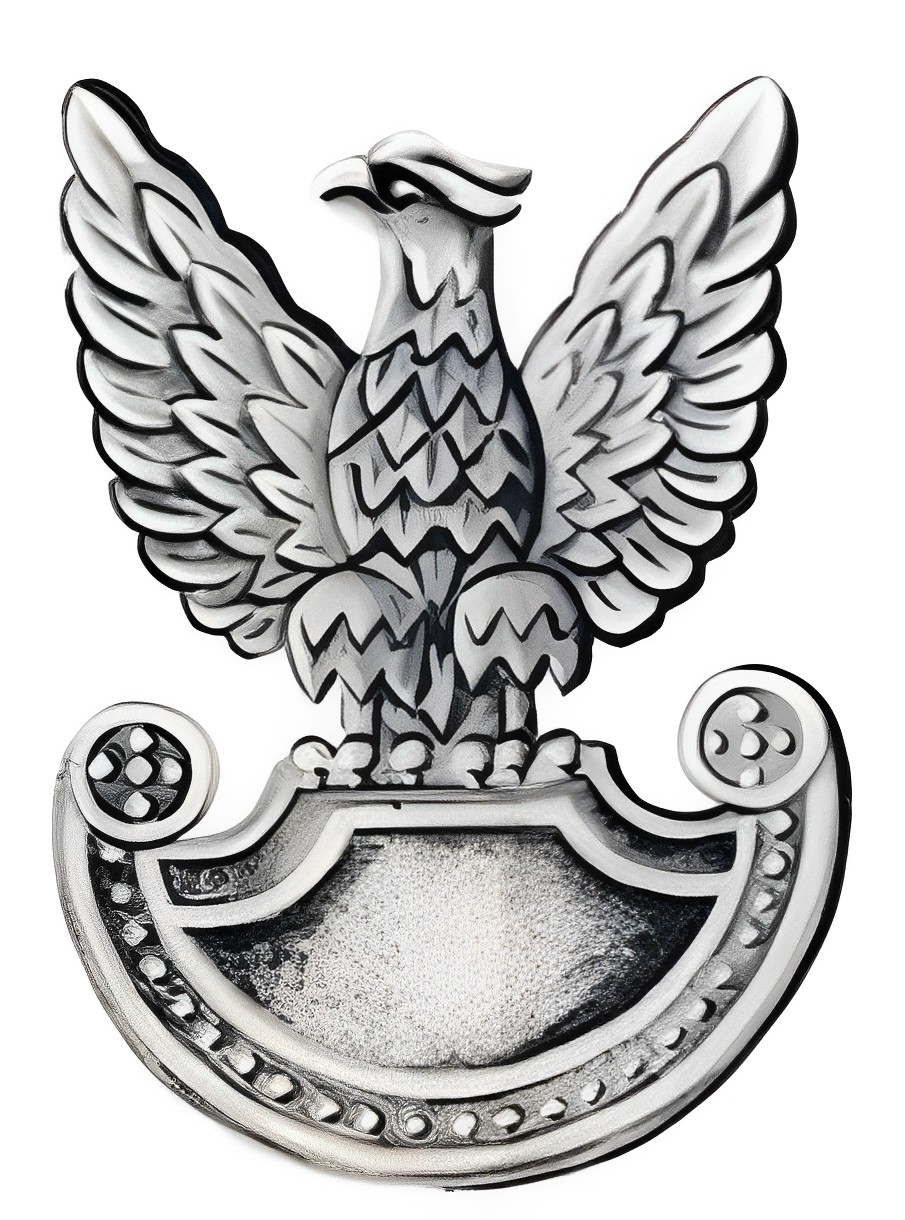This eagle pattern which
@Bombardier shows was in link to Wikipedia introduced by order of January 1, 1945. and it was unlikely to be put into use during combat operations.
Earlier, in the Polish Armed Forces in the USSR, a new eagle's pattern was introduced, modeled on the image of an eagle from the sarcophagus of Władysław Herman in the cathedral in Płock. In the assumptions he referred to the Piast tradition (the first Polish royal dynasty). It was made of patinated brass, 4.5 by 5 cm. The eagle's pattern, dated June 1, 1943, went to Moscow factories. Popularly called by "kurica" (hen) or crows.
The first batch of eagles was officially introduced by the order No.39 of the Commander of Division of July 12, 1943. The eagle's emblem was worn on caps and forage caps. He was painted on helmets, heavy weapons and military equipment. He was the emblem on all banners made in the SRR Union.
Many soldiers who have kept their eagles from the 1939 campaign. he wore them, after bending the crown, instead of the official eagle. Sometimes the soldiers would put the eagle upside down and joke that the crown had fallen.
They tried jokingly to cope with the awareness that this is a sign of a partial loss of Poland's sovereignty.
The soldiers had little to say if they wanted to fight alongside the Soviets or at the side of the British. Most often the case was decided, but independently on which side they fought to free the homeland.
Unfortunately, during the Second World War both Hitler and Stalin deliberately, with full awareness, destroyed the Polish scientific and political elite.

